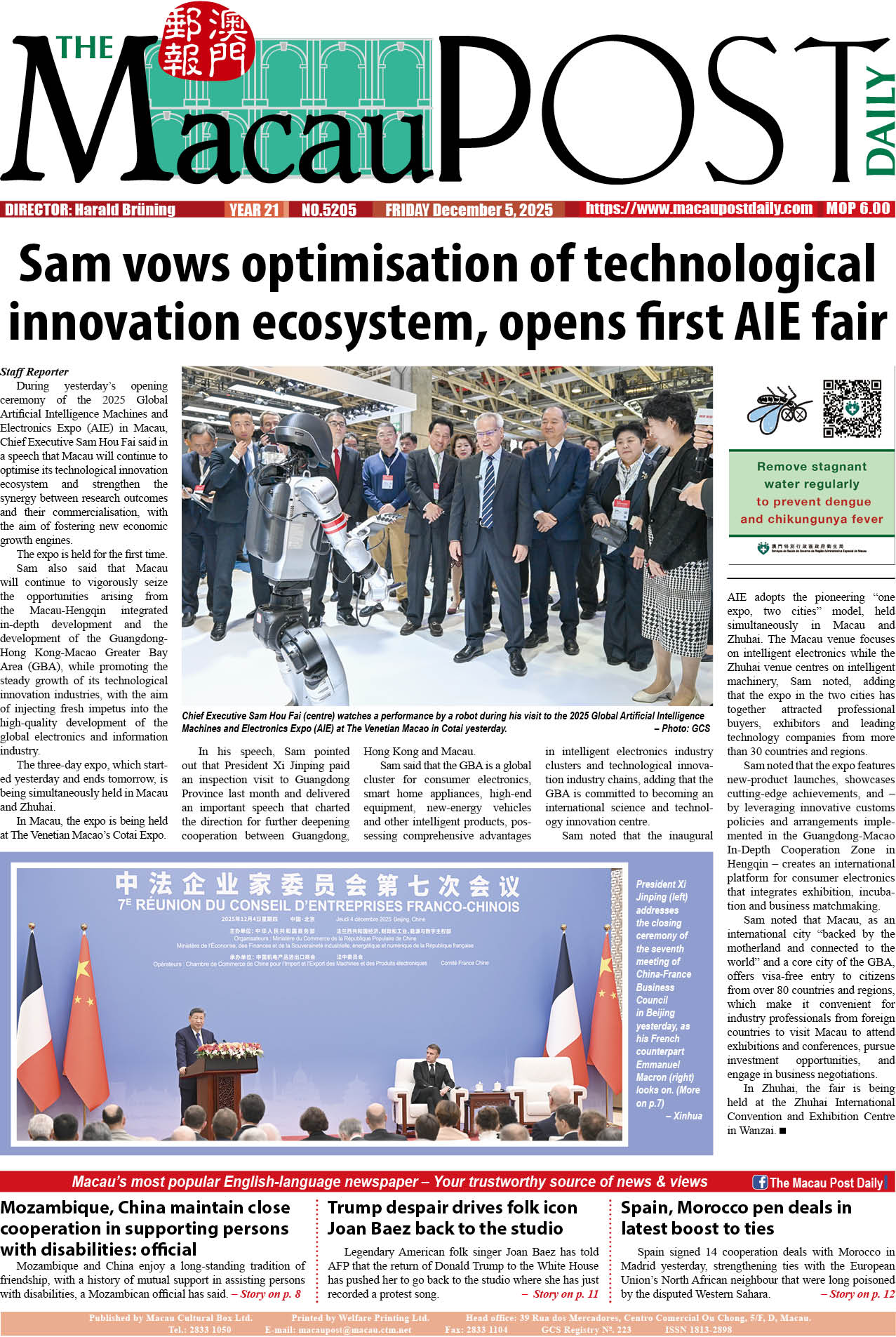A University of Macau (UM) research team has developed “a fast, accurate and convenient point-of-care pathogen detection method”, the public tertiary education institution said in a statement yesterday.
According to the statement, the team developed the method “with the help of the digital microfluidic system.”
Microfluidics deals with the behaviour, control and manipulation of fluids that are geometrically constrained to a small scale.
The method used by the UM team “uses isothermal DNA amplification together with a specific DNA molecular beacon probe on a digital microfluidic chip to detect life-threatening parasite infections”, the statement said.
According to the statement, in addition to obtaining fast results in 40 minutes, the method can also lower the reaction volume to one-tenth of the volume required with conventional methods.
According to the statement, the team’s study has been published in Scientific Reports, a journal under the London-based Nature Publishing Group.
The study was conducted by the multidisciplinary microfluidics research team from the university’s State-Key Laboratory of Analogue and Mixed Signal VLSI (AMSV). VLSI is the abbreviation for very large-scale integration, i.e. the process of creating an integrated circuit (IC).
The study was supported by the government-run Science and Technology Development Fund.







